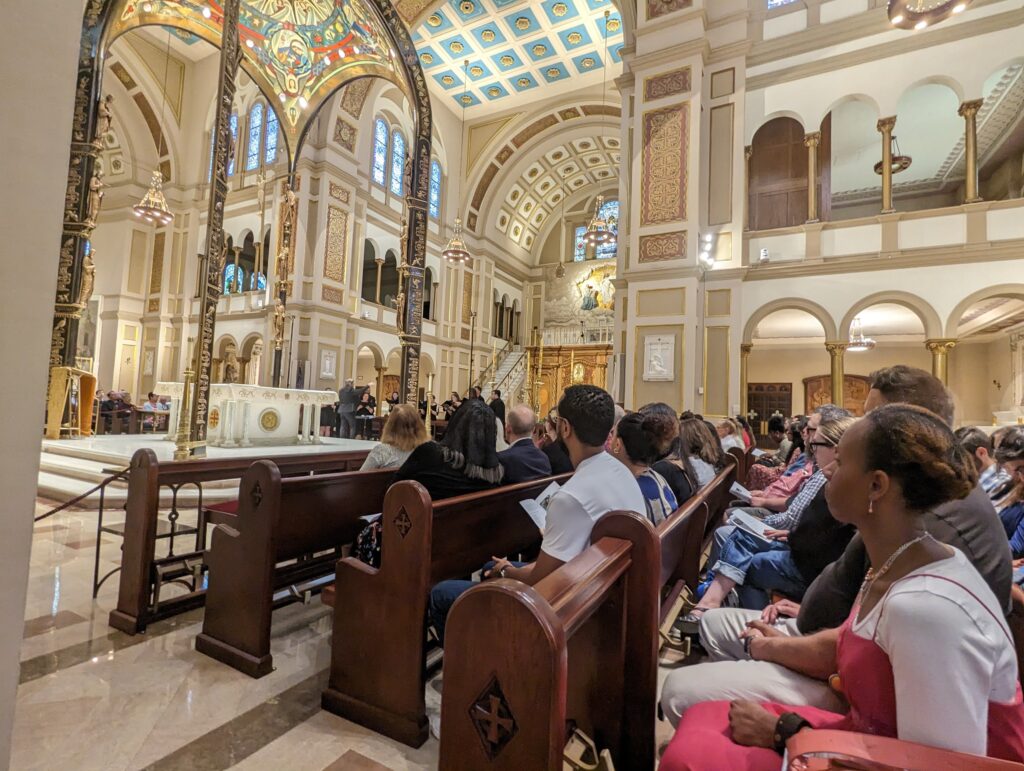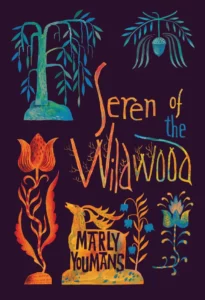Tradition is a river, and without its quickening streams, life dries up, withers, and eventually, perishes.— Sir James MacMillan
In a culture which prizes ephemeral fads over eternal beauty, and solipsistic relativity over objective truth, we are all like orphans separated from Heaven. Even in the world of modern sacred art, we find ourselves living in an era of discord and rupture from what is perennial.
Historically, however, liturgy and high art were never separated in the Christian West. For millennia, Holy Mother Church served as the supreme patroness of the greatest works of art — and only a restoration of the Church’s patronage will heal the current fractures of artistic modernity which have sadly entered into too much sacred music today.
This past May, at the conclusion of a concert at the gorgeous Franciscan Monastery of the Holy Land featuring eight new Eucharistic motets by eight emerging composers that he had personally selected and mentored, Sir James MacMillan told us that we must plunge ourselves into the river of Tradition once again to refresh a musical culture which has dried up.
I was privileged to be there at the birth of this great plunge and renewal. The Composer’s Institute is the brainchild of Peter A. Carter, who founded the Catholic Sacred Music Project in order to promote the flourishing of Catholic sacred music culture. (The Institute was co-sponsored by the Benedict XVI Institute for Sacred Music and Divine Worship, founded by Archbishop Salvatore J. Cordileone for much the same purpose). The Catholic Sacred Music Project has garnered acclaim and support by such princes of the Church as Cardinal Sarah and Archbishop Cordileone. In fact, the lion-hearted archbishop of San Francisco himself was present at the opening events of the Composition Institute, where he charged those present to vigorously promote beauty as the most neglected of the three transcendentals. The concluding concert (recorded by the Benedict XVI Institute and which will be aired by EWTN July 8 at 10 pm EDT and July 14 at 3:30 pm EDT), featured an exquisite choir of the finest liturgical singers of the Eastern seaboard conducted by Timothy McDonnell, with the superb Benjamin La Prairie at the organ console.
For the Composer’s Institute, eight composers were chosen through a highly selective process to attend a week of tutorials and seminars with Sir James and the master choral conductor Timothy McDonnell of Hillsdale College. The week concluded with the performance of a new setting of a Corpus Christi hymn by each composer–a Fantasy on Pange lingua (William Fritz), Te lucis ante terminum (Michael Garrepy), Rector potens, verax Deus (Kristian Schembri), Iam lucis orto sidere (Sam Schiebe), Nunc, Sancte, nobis, Spiritus (Aidan Vass), Rerum, Deus, tenax , vigor (Zachary Landress), Verbum supernum (Wilhelmina Esary), and Sacris solemniis (Samuel Rowe)–as well as two of MacMillan’s choral masterpieces. Together they constitute new settings of the Liturgy of the Hours for the Feast of Corpus Christi, a gift to the Church.
Throughout the afternoon, the ancient sonorities of the chant repertory ebbed and flow in and out of the new settings of these centuries-old hymns: the melody of the Pange lingua shone through repeatedly in William J. Fritz’s fantasia on the same, and Wilhelmina Esary’s setting of Verbum supernum utilized three different Catholic melodies–the Gregorian chants for Verbum supernum prodiens and O Salutaris hostia, and the more familiar modern “hymn” tune for O salutaris hostia, familiar to most Catholics for its use at Eucharistic adoration. Both Esary’s and Michael Garrepy’s works paid homage to the rich treasury of early medieval polyphony in the evocation of organum. Organum is the name given to the earliest known choral harmonization in the Christian West, in which chant melodies were ornamented by additional voices at the perfect fourth and fifth. Although he did not base his setting of Sacris solemniis on a particular Gregorian chant, Samuel Rowe’s setting overflows with qualities heard in many of the greatest Catholic choral works: clarity, movement, drama, and, for joyous occasions, effervescence. Garrepy’s setting also exhibited a seamless beauty, reminiscent of the continuous sonic tapestries of fifteenth-century Burgundian masterworks and the long, sensuous phrases of nineteenth-century Romanticism and 20th-century neo-Romanticism.
Fittingly, the two works by Sir James himself–Do Not be Afraid (American premiere) and A New Song–summarize, in musical gesture, the principles at work, and guide us in our travels along the streams of tradition. In particular, both pieces feature an illuminating relationship between the choir and the organ that instructs us in the right relationship between text and music, words and ineffability, the natural and the supernatural, the human and the Divine. Both works offer initial, quiet, mournful consonances in the voices, which seem to express St. Augustine’s description of the restlessness of the soul on earth, awaiting its rest in God. The organ is heard somewhat minimally until the pipes of the supreme liturgical instrument enact triumphant conclusions.
A New Song concludes with the organ sounding forth in majestic, chordal gestures, which seem to signify the promise of resurrection and final beatitude. In Do Not Be Afraid, the final, magnificent harmony sounds a surprising semi-tone up from the previous phrase, as the sopranos seem to glide away into the firmament, undergirded by shimmering oscillations in the organ. This kind of “surprise” musical gesture is a particularly Catholic one, and it can be glimpsed in so-called chromatic-third relationships found in the late Renaissance works of Giovanni Gabrieli and his contemporaries. For, in these musical surprises we can find an expression of the supernatural elevating the natural, of the Divine sacramental agency which alone can save us, and of the right relationship of the prayers of the faithful on earth to a God who is intelligible but known fully only to those who enjoy the Beatific Vision in the life beyond.
For Heaven is where the river of the Catholic tradition should bear us, as the book of Revelation proclaims–where the chosen sing before the Lamb, and there is “a river of water of life, clear as crystal, proceeding from the throne of God” and where, by the God’s grace, we shall need neither lamp nor sun, but the Lord God shall enlighten us forever and ever.
The concert may be viewed on EWTN or at this link on July 8 at 10 pm Eastern and July 14 at 3:30 pm eastern: https://players.brightcove.net/1675170007001/default_default/index.html?videoId=5409242031001
Sara Pecknold holds a Ph.D. in Historical Musicology with a minor in Vocal Performance from The Catholic University of America, where she served as a lecturer in the History of Sacred Music. Dr. Pecknold has presented at numerous conferences and institutions, including the Society for Seventeenth-Century Music (2012), the Annual Conference of the American Musicological Society (2016), the International Institute for Culture (2017), Seton Hall University’s Monsignor Cafone Lecture (2019), and Princeton University’s “Strozzi ’400,” which celebrated the fourth centennial of the birth of the prolific seventeenth-century composer, Barbara Strozzi (2019). In March of 2016, Dr. Pecknold appeared on BBC Three’s Composer of the Week series on the life and music of Barbara Strozzi. Her articles have appeared in the Yale Journal of Music and Religion, New Blackfriars, and the Catholic Herald. Dr. Pecknold’s current research concerns Eucharistic devotion in 17th-century Venice, music in Counter-Reformation mystical theology, and Marian art and music throughout Church history. At Catholic University, Dr. Pecknold was the founding director of the Concerts spirituels, a sacred music concert series honoring the liturgical calendar. She is currently Visiting Professor of Liturgical Music at Christendom College. Also a professional soprano, Dr. Pecknold has often served as a cantor in her home parish, the Basilica of St. Mary in Alexandria, Virginia. She lives in Alexandria with her husband and five children.




